Air leakage in buildings has serious consequences, and we are just beginning to understand their extent. Air leakage in buildings affects almost every aspect of the building’s performance. All of the following building envelope issues are positively impacted using a single set of air barrier materials.
Moisture
Moisture in buildings is at the top of the list for causing problems. It is one of the predominant problems resulting in insurance payouts. Moisture causes premature building failures, increased maintenance costs and too early replacement of the building.
Moisture can result from liquid getting into the building due to the water not being shed from the building with the use of roofing materials, water-resistive barriers, flashings or waterproofing. Moisture caused by poor construction—materials stored outdoors or moisture from paint and adhesives as they dry—can leave building materials with high moisture content, which can lead to problems.
We now understand that water damage in buildings may not be caused by liquid water coming from the outside, but rather water vapor infiltrating the building assemblies and then condensing. When the damage is discovered, the water is in a liquid state and one may not immediately think of air leakage being the cause. The most common reaction is to think that the water is a result of vapor transmission through the material.
It may be water vapor, but a vapor barrier does not solve the problem, as the air leakage carried the water vapor to the area where the vapor condensed into its liquid state.
This brings to mind the person who calls the roofing company in late winter, after having had no rain for four months and with no snow melting on the roof, and demands that the company come to fix the “roof leak.” One roofing company was so fed up with being blamed for shoddy workmanship when they had done a nearly perfect installation of the roofing materials that they refused to start installing shingles until all air leakage into the attic was corrected.
When the outside temperature is colder than the interior temperature, warm moist air from the inside can leak through the holes and cracks to the area where the first plane of condensation is found, and the vapor turns to liquid. When the inside temperature is colder than the exterior temperature, warm moist air from the outside can leak through the holes and cracks to the area where the first plane of condensation is found, and the vapor turns to liquid. It does not matter where you live, in the north or in the south, you will typically see both warm and cold atmospheres every year.
Use of an air barrier system in a building reduces moisture problems where the climate is hot and humid. The amount of moisture transport by air leakage is greater in hot and humid climates then in cold and dry climates.
Moisture in buildings causes mold growth, decay, rot and corrosion that lead to structural problems, durability issues, increased maintenance costs, building devaluation, health problems of the occupants, and the list goes on.
A complete air barrier system in a building goes a long way for managing moisture problems in a building. Many air barrier materials and accessories can also use a water-resistive barrier to provide additional protection.
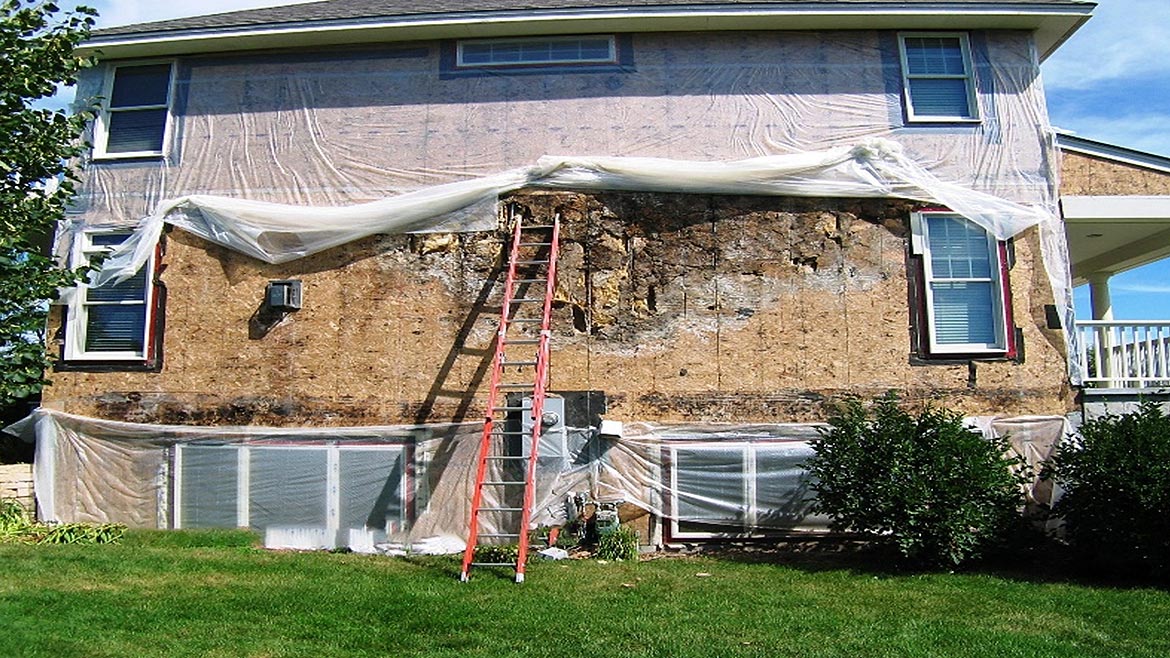
Wood rot from vapour
Energy Use
We don’t always want the indoor environment to be the same as the outdoor environment. To make ourselves comfortable, we add or subtract heat and we add or subtract moisture from the air inside the building. When this conditioned air exits from the building, the air has to be made up by bringing in outside air, which then needs to be conditioned. To condition the air, we use energy to add or subtract heat or to add or subtract water from the outside air. The more air leakage in a building, the more air we need to condition and therefore, the more energy we use.
The National Institute of Standards and Technology reports that the added energy to heat and cool buildings due to infiltration and exfiltration of air can be anywhere from 10 percent in cooling climates to 42 percent in heating climates (NISTIR 7238).
The Building Technologies Office Multi-Year Program Plan in 2010 showed that air infiltration in buildings results in primary energy consumption of 2.26 quads for heating and 0.59 quads for cooling for residential buildings. For commercial buildings, infiltration results in primary energy consumption of 1.29 quads for heating and 0.15 quads for cooling. Reducing air leakage rates in buildings has a great impact on reducing energy use. Currently, the highest impact on reducing energy use is double digits, whereas almost all other energy-saving measures result in single-digit savings.
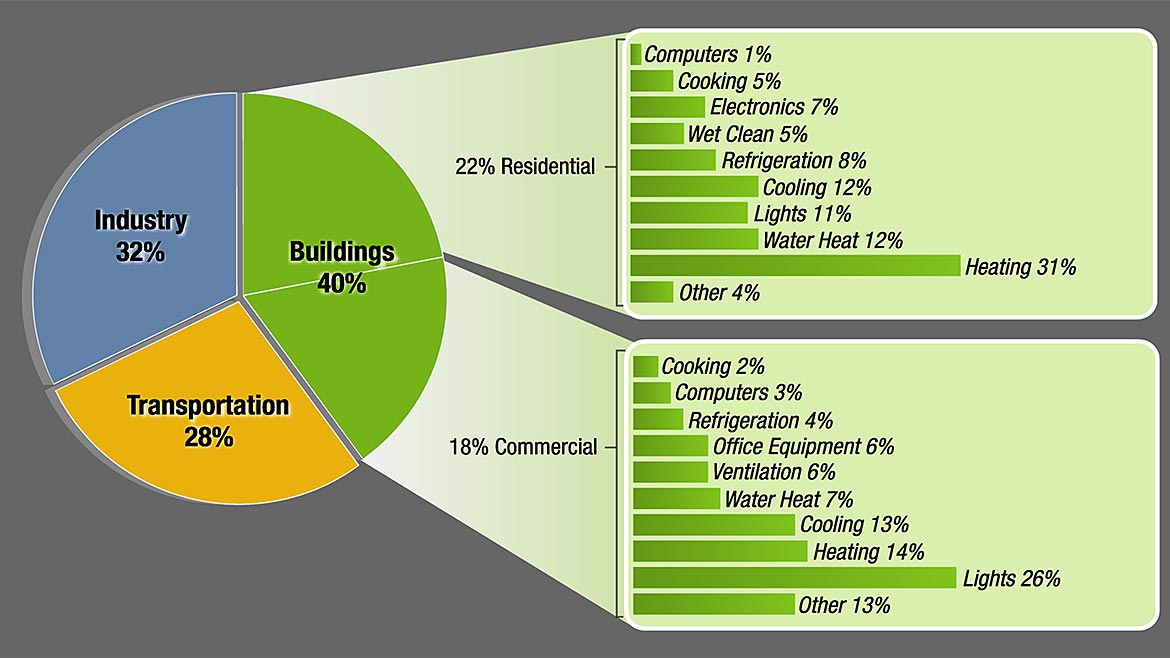
Air Leakage Impact on Insulation
For fibroustypes of insulation, air provides the insulation value. Think of glass. We know it is not a good insulator, but we spin it into cotton candy and put a lot of it in our buildings. The purpose of the spun glass is to reduce the potential for air moving through the insulation by convection currents. This works quite well, but if air is pushed through the material because of a pressure difference, the fibers of glass cannot stop airflow through a material. The reduction of the value of the insulation can be up to 40 percent. Different types of fibrous insulation will have different airflow rates and, therefore, the drop-in insulation value will differ from material to material.
Some designers then switch to an insulating material that does not allow air to flow through it. That can help, but be careful that the air does not simply flow around it.
Here are two examples. In the first example, a research project was conducted to see what the best way would be to insulate the interior of naval buildings constructed from CMU to turn them into office buildings. On paper, it seemed that the optimal way to insulate was to add polyisocyanurate boardstock insulation over the existing interior gypsum finish and simply install new interior gypsum boards over that. On paper, that looked good. When computer models were used, it looked good. What was not taken into consideration was that the steel stud wall in front of the CMU wall allowed air to flow freely behind the steel-framed wall and the CMU wall, rendering all the insulation ineffective. The problem was solved by compartmentalizing the wall and sealing between the steel stud wall and the CMU wall and the steel stud wall and the ceiling/floor. Now the air could not flow between the two walls and short-circuit the insulation.
The second example happens on many job sites. As an example, the project specifications call out rigid cellular plastic insulation with a higher R-value to be installed on the exterior of a backup wall. During an inspection of the installed insulation, the boards did not lie flat against the wall. In many cases, the wall is not level. In other cases, there is material, such as mortar, that was not struck flush or tooled, and protrudes past the plane of the wall. These imperfections create an air space between the wall and the insulation, allowing air to flow behind the insulation, negating the insulation value of the board. The air can be leaking from the building or it can come from the outside, enter the wall cavity and then exit the wall cavity to the outside in a wind washing effect.
The same physics can happen from the interior. Air can flow into the wall cavity carrying moisture, move through the insulation or around the insulation, and either exit the wall cavity to the outside or return back into the building in an indoor air washing effect.
In all these cases, air moving through or around insulation reduces or negates the value of the insulation, resulting in moisture problems and increased energy use.
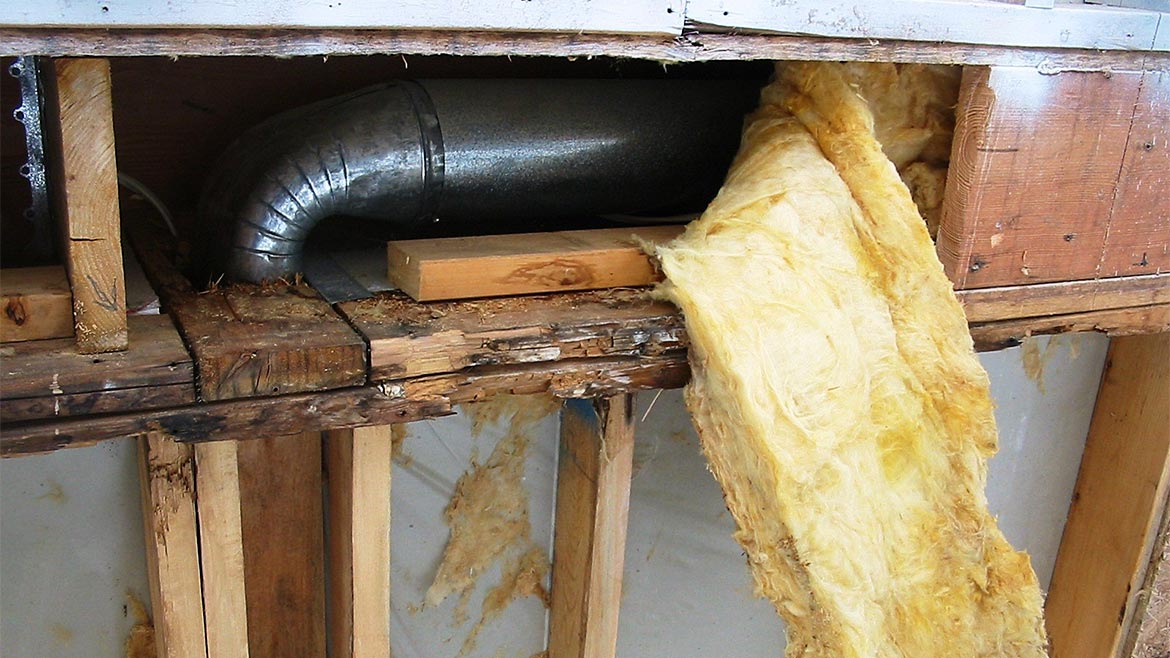
Air Leakage Through and Around Fenestrations
Whether the air leaks through a wall or a window, the results are the same: moisture problems and increased energy use. Operating windows and doors can be made very airtight. Some manufacturers are adapting European technology for use in North America. The result is extremely airtight and watertight products. You should choose extremely airtight and watertight fenestration products for your project.
Purchasing the best fenestration in the world does not mean that it will be installed properly. For many fenestration installers, the job is to make sure the product is level, square and secured properly. Air and water intrusion are not concerns. You need to be extremely clear in project specifications who is responsible to tie the fenestrations to the plane of air and water tightness. For many projects, this job is left to the air barrier system installer.
The least insulating part of a window is the window frame. The best insulating value will be found at the center of the glass. In cold climates, if a window is installed in a wall and not sealed to the air barrier assembly, a lot of air leakage can occur from the exterior into the building between the window and the rough opening. In commercial buildings, frames are oftentimes steel or aluminum. Cold air flowing past a metal window frame cools the window frame even more, resulting in condensation or frost. The gap between the window frame and the wall air barrier needs to be sealed.
Air leakage around windows between the window frame and the wall is the second largest area of leakage just after the roof/wall connection.
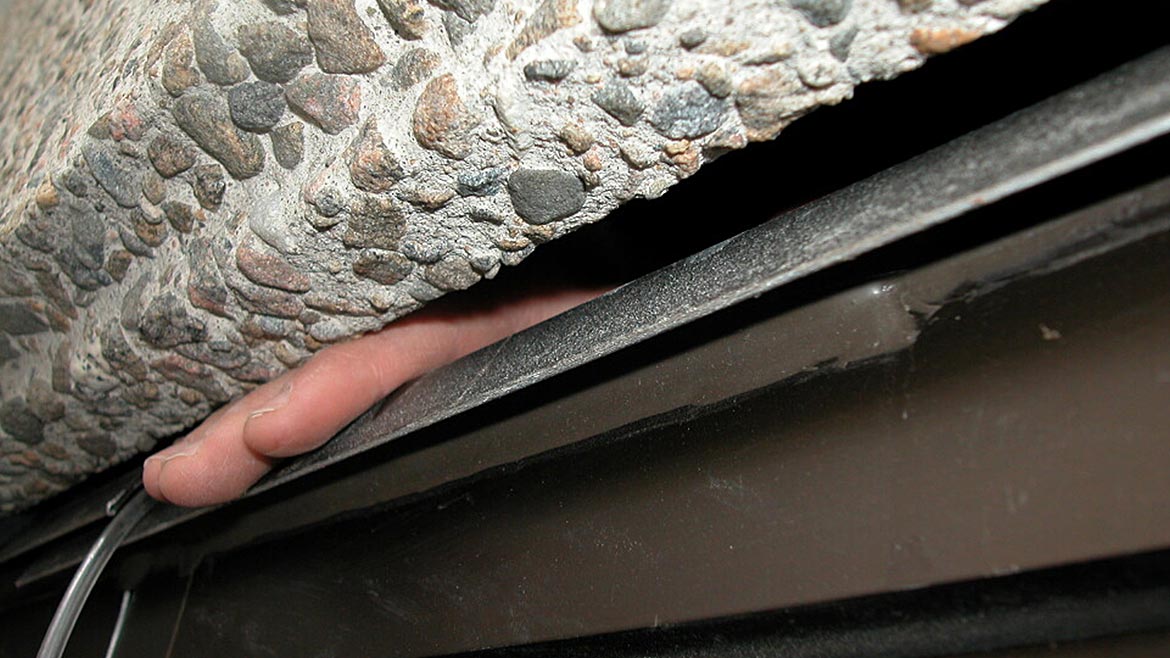
Sound Abatement
Sound has become a major concern in buildings. This could be sound from the outside, from adjoining rooms or on the floor above or below. Designers have used air leakage control techniques for decades to reduce sound travel. Most of the sound we hear travels through the air. If we stop the air from traveling, we stop much of the sound. Air barrier systems are seeing increased usage on both the exterior and on the interior between dwelling units or offices to stop the movement of air and, therefore, sound.
Odor Abatement
Most people don’t want to know what their neighbor is cooking every night. In multi-use commercial buildings, there are times when odors from one unit seeping into another unit are undesirable. One real-life example was in a strip mall. One of the tenants was operating a beauty parlor, which used many chemicals in their work. The unit next door was a pet store. The fumes from the beauty parlor seeped over to the pet store and bothered the animals to the point that they made a lot of noise.
An interior air barrier was installed between the two units, resulting in the odors being contained within the unit.
In today’s world, more and more people are becoming sensitive to odors and are demanding that their living environment be separated from others.
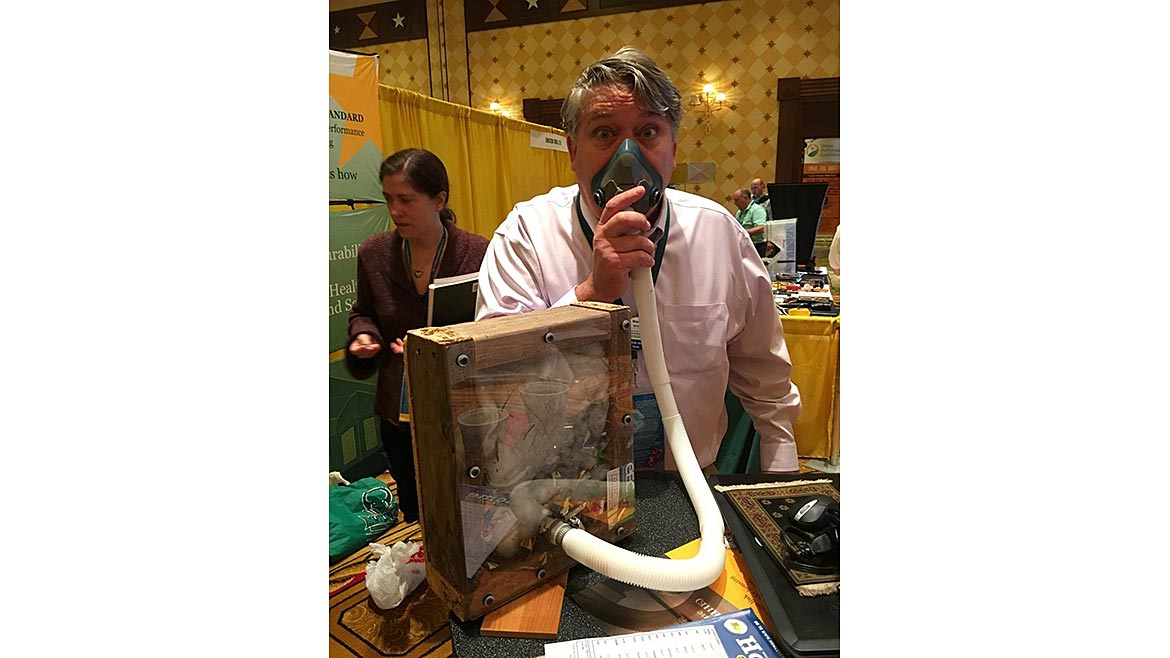
Pollutants
Pollutants is a broad description that covers so many items. As an example, many consider water to be a pollutant. For this discussion, the focus is on airborne pollutants.
Air carries airborne pollutants, both inside and outside the building. They include pollen, suspended particulates, allergens, bacteria, smoke and many more. Exterior airborne pollutants can be brought into a building and become concentrated inside.
There are also airborne pollutants or materials in a building that can become airborne. They can include mold spores, bacteria, asbestos fibers, rodent droppings and many more. If air moves through the building envelope, crawl spaces, attics, storage areas and garages, it can pick up many of these materials and bring them into the living space, where humans or animals will then breathe them in.
Another pollutant is dust. Depending on the day, there can be a lot of dust in the air, even if it is not visible. As outside air leaks into a building, it brings dust with it. This dust circulates throughout the building and eventually settles on the furniture, walls, floor and anything else that is inside. Occupants of airtight buildings notice the lack of dust inside a building.
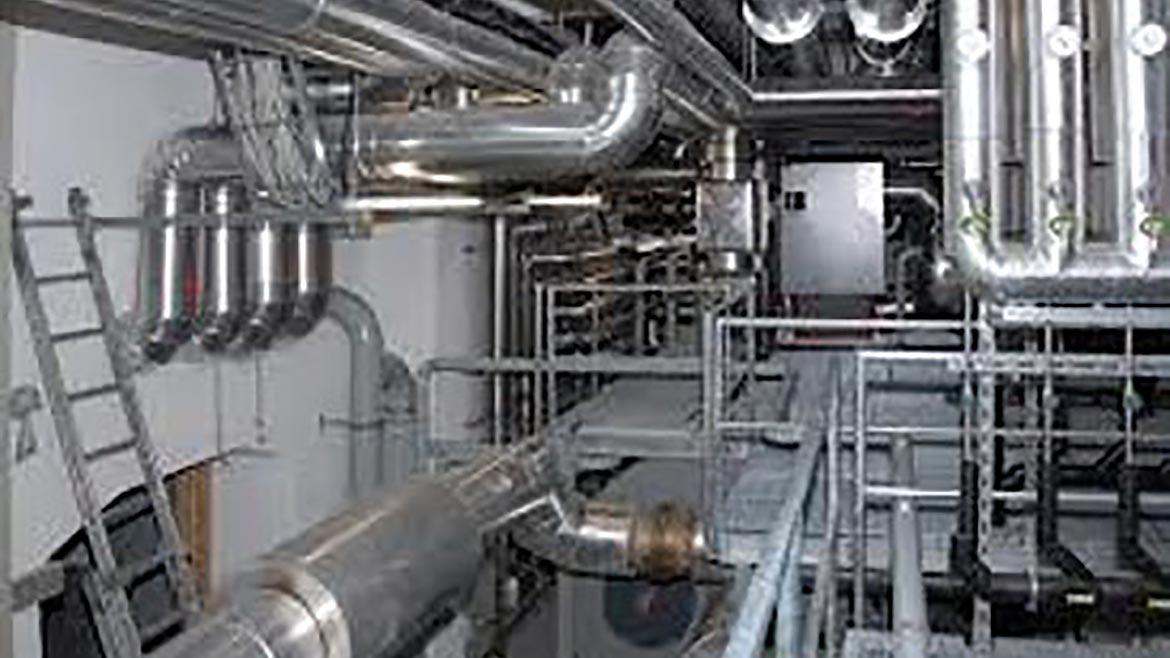
HVAC Efficiency
The first thing to realize upon entering a building is that the HVAC will not work without a building envelope. Then, we need to understand that we need to build the building envelope tight and ventilate correctly. Air that is needed for the occupants of the building needs to enter through the mechanical system and not through holes and cracks in the building envelope.
The building envelope needs to be completely airtight if we want the HVAC system to work as intended. If we have large air leakage in different parts of the building, it will be impossible to deliver the right amount of air to the right rooms.
Pressure balancing of the distribution system and the checking of airflow from each register will not solve the problem. The pressure difference between the inside and the outside of the building will vary from hour to hour, so an hour after it is adjusted and the whole system is balanced, the procedure may have to be repeated.
For an HVAC system to work properly, the building envelope needs to be completely airtight and then each space separated from the others. This means compartmentalizing buildings, room from room and floor from floor. Air sealing each floor turns a 12-story building into 12 one-story buildings, as far as stack pressure is concerned.
Changes in air pressures in a room can disrupt the delicate pressure relationships between conditioned spaces that HVAC systems create by design in buildings, such as hospitals, where infection control and patients’ very lives may depend upon maintaining those relationships, and laboratories, where pollutant control is essential.
Insects
Insects like the interior conditioned space as much as we do. They are drawn to air leakage spots and then make their way into the building. Air leakage around windows is one area where they enter. In one school building infested with flies, the building was air sealed to stop the flies from entering, but work was justified as making the building more energy-efficient.
Much has been learned about air barriers and their value in creating creature comfort and for saving energy.



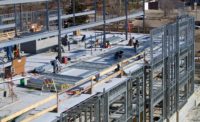
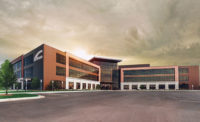
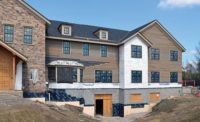
Report Abusive Comment